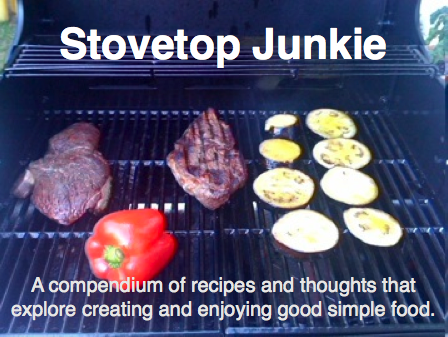Serves 3-4
Turkey meat sauce--ugh, stiff, flavorless, dried out bits of meat……health food dribble….and seriously, if you want to substitute the turkey for beef or pork or veal.....you can, but it doesn't have to be like that…in fact, ground turkey is an extraordinary meat--low in fat and subtle in flavor, (not over-powering like beef or pork can be) it takes on other flavors and seasonings well. It's tender and juicy, but easy to overcook. Most of all, it is delicate (like veal, but without the safety net of a higher fat content) so if you overwork it during preparation or over cook it, all you will get is the cardboardesque mess described above. Follow the recipe below and find out how good turkey can be.
Ingredients
1 lb ground turkey
2 tablespoons finely minced onion
3 tablespoons chopped parsley
3 tablespoons chopped basil
1 egg and 1 egg white
2 tablespoons ground parmigiano or pecorino romano
1 tablespoon olive, plus oil for frying
1 cup chopped tomatoes
bread crumbs
1/3 cup panko Japanese bread crumbs*
salt, pepper, squeeze of lemon
Optional:
dash worchestire sauce
*Panko Japanese bread crumbs are normally used as a batter for tempura. However, they are indeed useful in other contexts, I put them into the turkey meat sauce to provide a soft and almost chewy texture, they help the meat sauce melt in your mouth! Try panko, I promise you, you'll end up finding a use for them in a variety of contexts.
Ok this recipe is actually quite simple. First measure out and prepare all ingredients. While you are at it, get a large, heavy sauce pan out. Combine onion, parsley, egg and egg white, cheese, tablespoon olive oil, panko, salt, pepper, and worchestire sauce in a bowl.
Gently fold in the turkey, WARNING: DO NOT OVER MIX. Gently form large flat chunks of meat and dust with breadcrumbs.
Heat your sauce pan, and coat in olive oil once hot. Gently place the meat in the pan and fry. You can throw in the tomatoes whenever you want...I like to throw them in early, so that they break down fully and get sweet. Once the meatballs have been nicely browned on a couple of sides, gently break it up. Even though the turkey may still be a bit raw, that's fine, just make sure you fully cook them before serving.
Speaking of serving...sure, you can serve these with pasta, but don't feel limited by Italian nationalistic pride--get creative here are a few different ideas for meat sauce. Try them on a bed of arugula, or you can toss in some white beans while the meat is cooking and serve it with a nice crusty bread. Enjoy, and as always let me know how it goes.




.JPG)
























